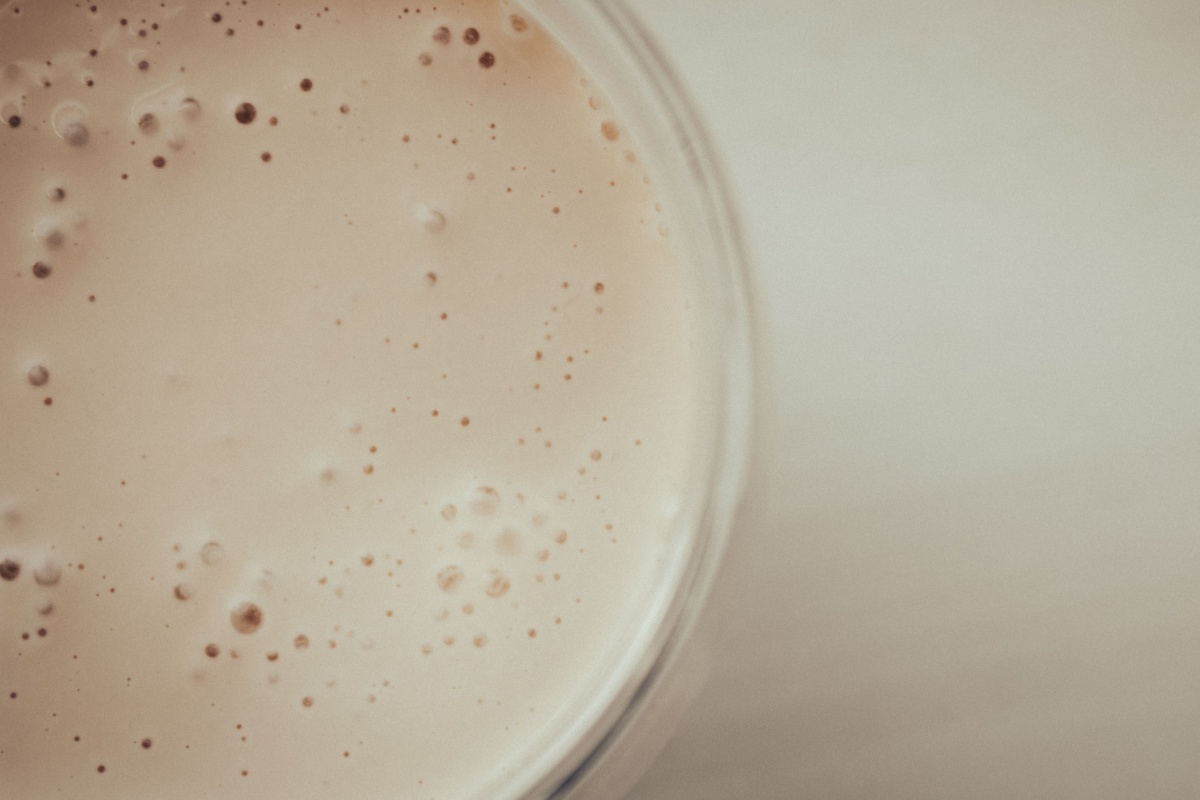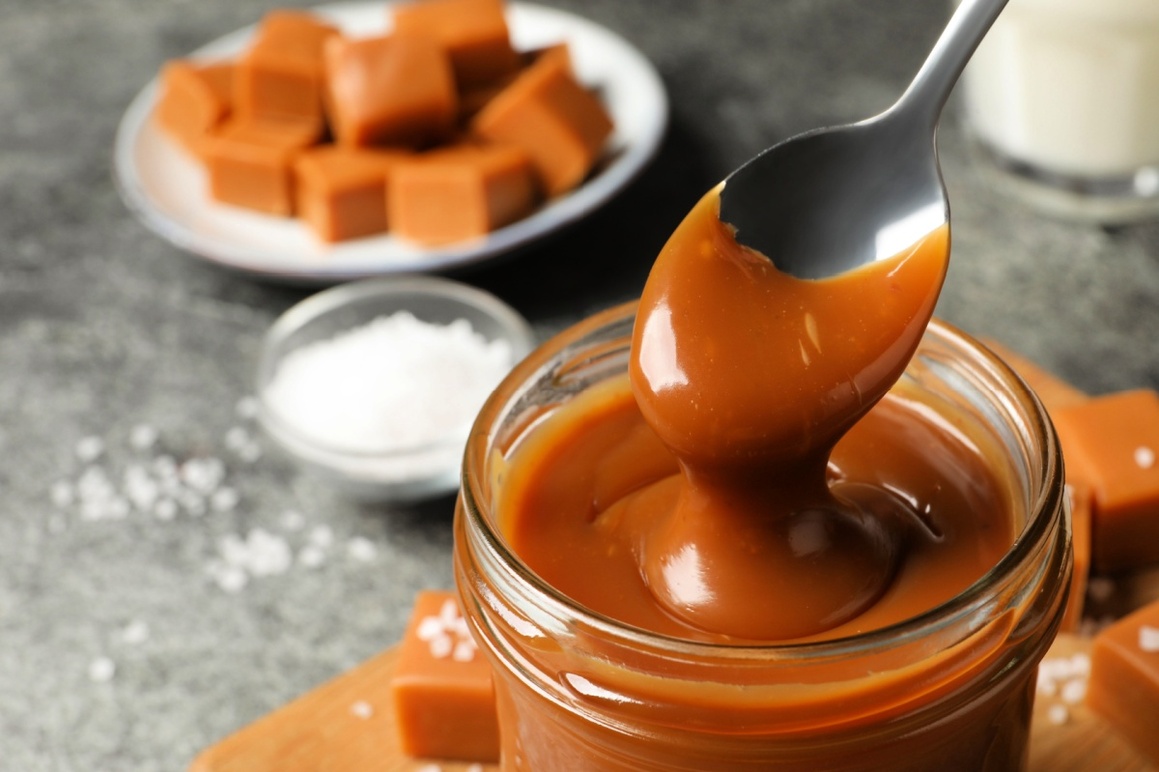Creamy Caramel-A-Chino for One

Creamy Caramel-A-Chino for One
Sweet and buttery, this caramel cappuccino sans coffee is a creamy, warm delight!
Happy & Healthy Cooking,
Fun-Da-Mentals Kitchen Skills
- measure :
to calculate the specific amount of an ingredient required using a measuring tool (like measuring cups or spoons).
- microwave :
to heat or cook food or liquid quickly in a microwave oven, which uses high-frequency electromagnetic waves to generate heat in the food's water molecules.
- whisk :
to beat or stir ingredients vigorously with a fork or whisk to mix, blend, or incorporate air.
Equipment Checklist
- Microwave
- Microwave-safe mug
- Potholder
- Liquid measuring cup
- Small whisk
Ingredients
Creamy Caramel-A-Chino for One
- Caramel Drizzle (you'll use about half)
- 1 C milk **(for DAIRY ALLERGY sub dairy-free/nut-free milk)**
Food Allergen Substitutions
Creamy Caramel-A-Chino for One
- Dairy: Substitute dairy-free/nut-free milk.
Instructions
Creamy Caramel-A-Chino for One
measure + whisk
Measure and add 1 cup of milk to the mug with the remaining Caramel Drizzle. Whisk until frothy and there are few lumps.
microwave + whisk + serve
Heat in the microwave for 1 minute or just until the milk starts to foam. Whisk again to remove any remaining lumps. Serve with the Classy Caramel Coffee Cake in a Mug with Cinnamon Streusel Topping.

Hi! I'm Caramel!
"I'm a sweet confection made from sugar. You may find me coating the outside of popcorn or an apple on a stick, drizzled over ice cream, or formed into a chewy candy!"
- Arabs are thought to have created the first mixture of sugar and water in 1000 CE.
- The word "caramel" was first recorded in the English language in 1725—it comes from the French "caramel" borrowed from the Spanish "caramelo." The original Spanish word did not refer to the chewy caramel candy we know today, but more likely, to caramelized sugar.
- Caramel is simply sugar melted, with liquid or without, into a syrup and cooked until the sugar crystals turn into a medium to dark amber liquid. In this form, you can coat nuts (pralines) and popcorn, thicken it into a sauce, and many other delights. Whisk in some butter, remove from the heat, whisk in cream, and you have a delicious caramel sauce.
- Did you know that Milton Hershey began his chocolate empire with caramel, not chocolate? Hershey was born in 1857 in Pennsylvania and founded a candy-making business in Lancaster, Pennsylvania. By 1883, he had pioneered the production of caramel and established the Lancaster Caramel Company. In 1893, he sold that company and started the Hershey Chocolate Company with the proceeds.
- The "crème caramel," a custard topped with caramel, was first published in a cookbook by Jean Baptiste Reboul in 1897.
- In 1977, French pastry chef Henri Le Roux created salted caramel when he made his "caramel au beurre salé," a salted butter caramel coated with crushed nuts.
What is a Cappuccino?

- A cappuccino (kap-oo-chee-noh) is a coffee drink from Italy made with espresso, steamed milk, and a layer of milk foam. The Italian word "cappuccino" is the diminutive form of "cappuccio" or "hood" in English.
- It was named after the Capuchin monks in Italy who wore religious habits (tunic and cowl or hood) of the same color as the coffee and milk. One legend says it was named after the Capuchin friar, Marco d'Aviano, who had a crucial role in the victory of the Battle of Vienna.
Let's Learn About Italy!

- Italy became a unified country in 1861, only 150 years ago. It is sometimes called "bel paese" or "beautiful country."
- Italians invented the piano and the thermometer!
- In ancient Roman mythology, two twin brothers named Romulus and Remus founded Rome, Italy's capital city. The myth says the twins were abandoned and then discovered by a she-wolf before being found and raised by a shepherd and his wife. Eventually (and after many exciting adventures), they found themselves at the location of Palatine Hill, where Romulus built "Roma." The Italian wolf became Italy's unofficial national animal.
- In the 1930s and 40s, Mussolini, Italy's prime minister, and dictator tried to eliminate all foreign words from the Italian language. How did he do that? He just changed them! For example, in soccer, "goal" became "meta." Disney character names changed, too: Donald Duck became "Paperino;" Mickey Mouse became "Topolino;" and Goofy became "Pippo." Although they're not banned anymore, these words and names have stuck. So now if you go to the Italian Disneyland, called Gardaland Park, you will see Topolino and Pippo!
- About 60 million people call Italy home, and it is 116,350 square miles, slightly larger than the US state of Arizona. If you compare that to the United Kingdom, 67 million people live there, and it is about 94,350 square miles. So, the UK is smaller than Italy but has a bigger population!
- The Italian flag is green, white, and red. These colors represent hope, faith, and charity.
- The average Italian eats close to 55 pounds of pasta annually. If you think about how light pasta is, that is a considerable amount! There are more than 500 different types of pasta eaten in Italy today.
What's It Like to Be a Kid in Italy?
- Kids begin school at 6 years old. They grow up speaking Italian, but they learn English in school, so many become bilingual in Italian and English.
- The most popular sport for kids is football (soccer). The Italian word for soccer is "calcio," the same word they use for "kick." A favorite of younger kids is "Rody, the bouncing horse," a plastic horse that a small child can hop onto and bounce around the room. Rody was invented in Italy in 1984.
- The family ("la famiglia") is a central characteristic of Italian life. Children have great respect for their older relatives. It is traditional to name the first male child after the grandfather and the first female child after the grandmother.
- If kids live close to school, they can go home and have lunch with their families! Lunch at school might be pasta, meat with vegetables, a sandwich, or a salad with lots of ingredients. Families typically eat dinner later (7 to 8 pm), so kids end up staying up later, too!
- Between lunch and dinner, kids often enjoy "merenda," which is an afternoon snack that translates to "something that is deserved." It is really a mini-meal that can include both savory and sweet foods. Examples of savory foods are a salami or mortadella sandwich, a slice of rustic bread rubbed with a cut, raw tomato, or "pizza bianca" (white pizza without tomato sauce). Types of sweet foods eaten during merenda are "gelato" (a lower-fat type of ice cream), any kind of cake, or biscotti dipped in warm milk.




